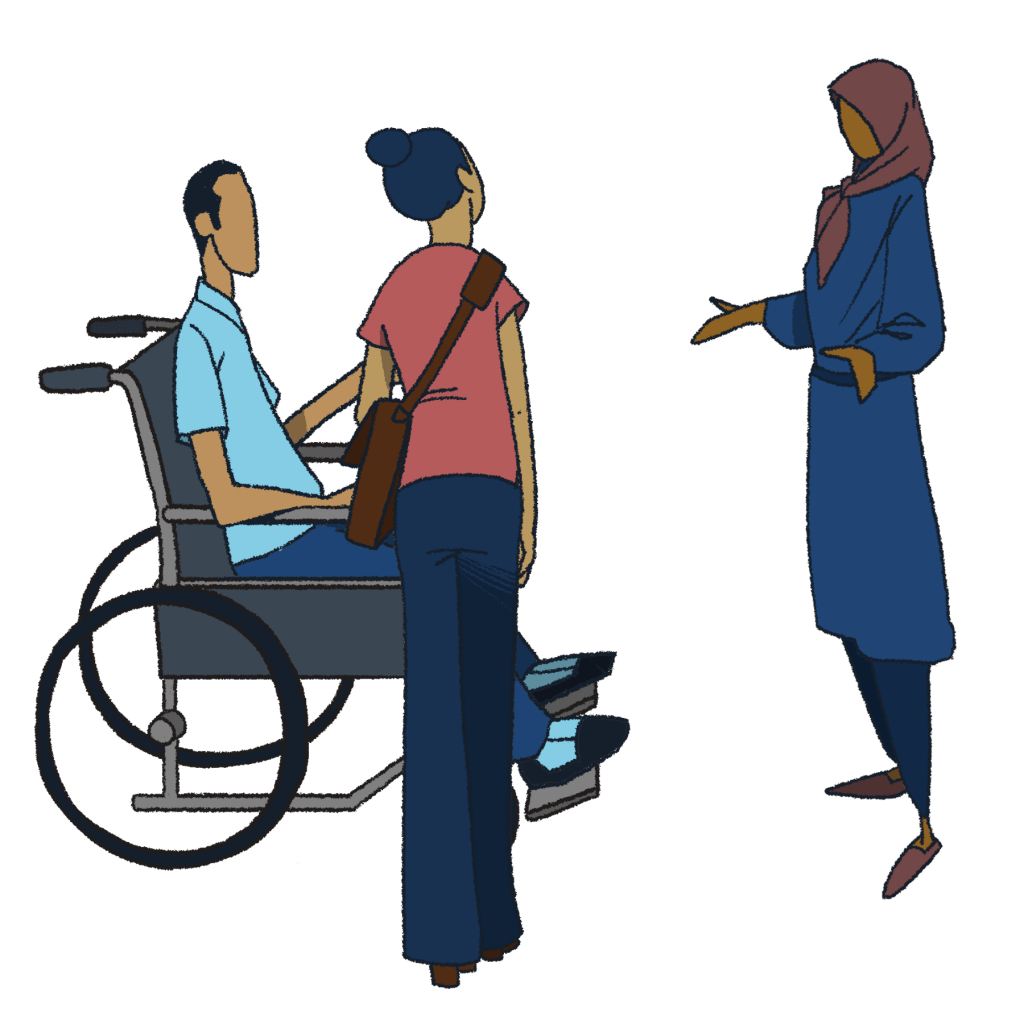Peer mentoring programs serve as a form of ‘organization socialization’, or the process by which newcomers acquire the skills, behavior, knowledge and attitudes for effective participation in an organization. Mentors serve as veteran models of behavior for new students, and can provide a valuable source of information1.
Involve students in recruitment
Graduate students in the program are more able to answer questions related to lifestyle, places to live/ rent, cost of living, safety, and social life2. For example, incoming students may wonder “What is the social life like for graduate students? How do graduate students meet each other outside of class? How can I join an informal sports team? Are there any LGBTQ support groups on camps?”
Tips for department, faculty, PIs:
- Invite current graduate students to help with the recruitment process
- Be available to answer questions from prospective graduate students
Tips for students:
- Participate in the recruitment process
- Provide honest answers and feedback to prospective students
Peer-peer mentoring program
Peer mentors can help new students adapt to graduate school, navigate difficult social and cultural situations, and discuss topics that the mentee would not feel comfortable discussing with their faculty advisor2,3. This is especially important because incoming graduate students “don’t know what they don’t know”: they often unaware how graduate school differs from their undergraduate experience, what the expectations are in their courses, or of the unwritten rules and expectations lab or department culture. A mentor can help guide new students by teaching them lessons they need to succeed and by providing a ‘safe place’ to ask ‘sticky’ questions.These mentor-mentee relationships can morph into more synergistic co-mentoring relationships by offering opportunities to co-present at conferences, collaborate on publications and research, and form writing groups2.
Peer mentoring often occurs informally through advice-seeking among students, but facilitating formal peer mentoring through departmental or university programming helps to ensure that all students have access to the benefits of peer mentoring2. This can be important because those students who do not seek out peer-mentoring relationships on their own might not do so because of social anxiety, insecurity, or inclusion issues. Formalizing peer-peer mentoring programs provides support and structure to mentoring relationships, while relieving faculty time and allowing for more effective forms of faculty student support.
Peer-peer mentoring programs can take a number of different forms. One-on-one mentoring offers focused attention to the mentee, and often includes experienced graduate students pairing up with new graduate student in the same field (i.e., big-little mentoring)2. Group mentoring programs can also be helpful, but may not provide the same ‘safe space’ to ask uncomfortable questions as a one-on-one relationship can offer.
Tips for department, faculty, PIs:
- Develop a formal peer-peer mentoring program
- Provide mentor training session to train new mentors on what to expect, or hire a veteran mentor to organize and provide training session.
Tips for students:
- Where the mentoring programs or don't exist it might fall on students to self-organize or advocate for such a program. Students can become involved in graduate student leadership groups, which can take on a combined effort to organize or propose a formal mentoring structure.
- Participate in mentoring relationships, as a mentee and then a mentor.
- Volunteer for leadership positions to take on an active role in the ongoing improvement of the mentoring program, e.g., to train incoming mentors.
- Organize daily (15 minute) check in meetings with your lab to talk through everyone’s progress, hold ups, and next steps4.
References
- Allen, T. D., McManus, S. E., & Russell, J. E. A. (1999). Newcomer Socialization and Stress: Formal Peer Relationships as a Source of Support. Journal of Vocational Behavior, 54(3), 453–470. https://doi.org/10.1006/jvbe.1998.1674
- Boehm, B., & Lueck, A. J. (2016). Graduate Student Peer Mentoring Programs: Benefitting Students, Faculty and Academic Programs (G. Wright, Ed.). In (p. 17). Syracuse University Press.
- Allen, T. D., McManus, S. E., & Russell, J. E. A. (1999). Newcomer Socialization and Stress: Formal Peer Relationships as a Source of Support. Journal of Vocational Behavior, 54(3), 453–470. https://doi.org/10.1006/jvbe.1998.1674
- Hicks, M., & Foster, J. S. (2008). Adapting Scrum to Managing a Research Group. 8.







